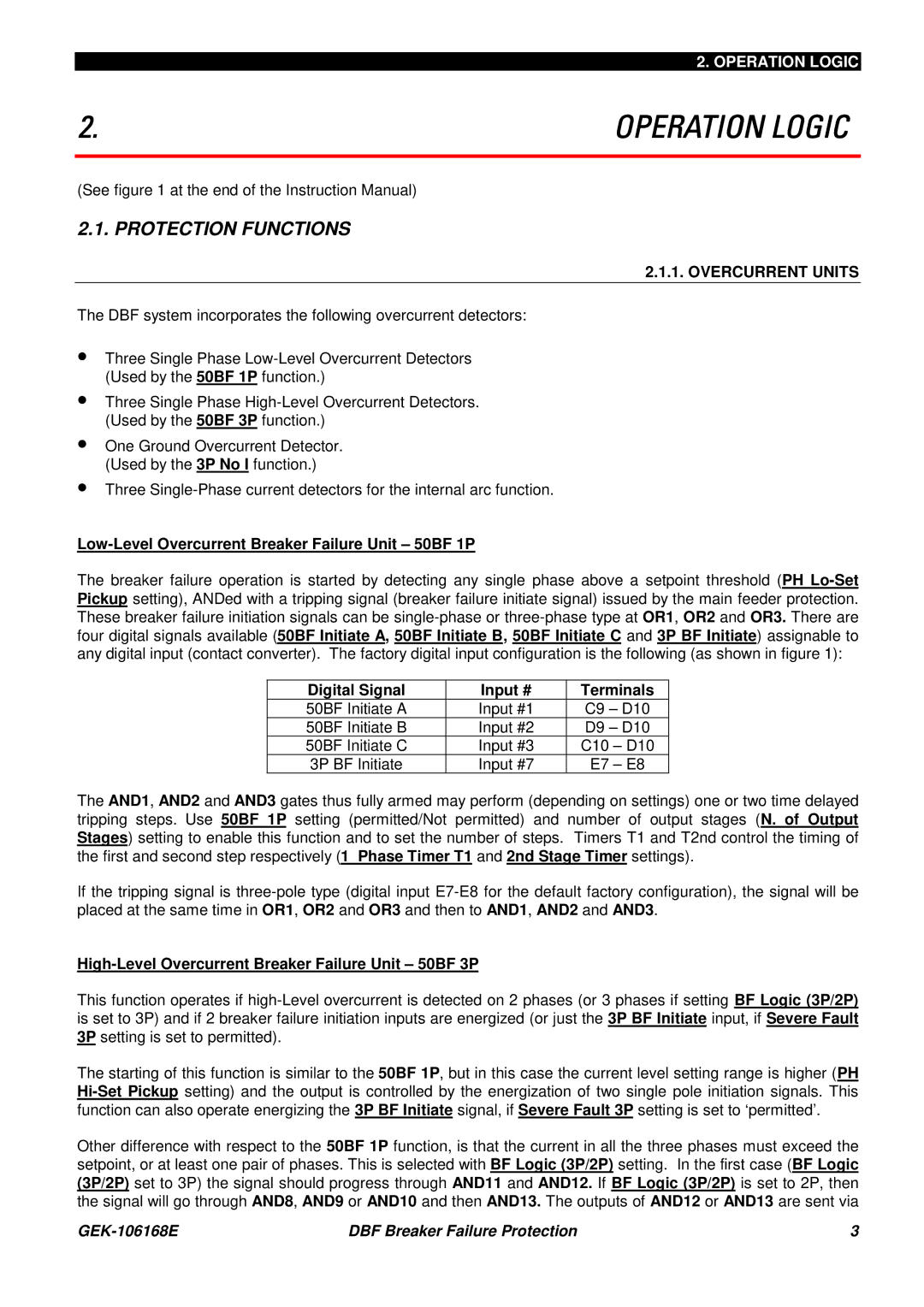| 2. OPERATION LOGIC |
2. | OPERATION LOGIC |
|
|
(See figure 1 at the end of the Instruction Manual)
2.1. PROTECTION FUNCTIONS
2.1.1. OVERCURRENT UNITS
The DBF system incorporates the following overcurrent detectors:
∙Three Single Phase
∙Three Single Phase
∙One Ground Overcurrent Detector. (Used by the 3P No I function.)
∙Three
Low-Level Overcurrent Breaker Failure Unit – 50BF 1P
The breaker failure operation is started by detecting any single phase above a setpoint threshold (PH
Digital Signal | Input # | Terminals | |
50BF Initiate A | Input #1 | C9 – D10 | |
50BF Initiate B | Input #2 | D9 – D10 | |
50BF Initiate C | Input #3 | C10 | – D10 |
3P BF Initiate | Input #7 | E7 | – E8 |
The AND1, AND2 and AND3 gates thus fully armed may perform (depending on settings) one or two time delayed tripping steps. Use 50BF_1P setting (permitted/Not permitted) and number of output stages (N. of Output Stages) setting to enable this function and to set the number of steps. Timers T1 and T2nd control the timing of the first and second step respectively (1_Phase Timer T1 and 2nd Stage Timer settings).
If the tripping signal is
High-Level Overcurrent Breaker Failure Unit – 50BF 3P
This function operates if
The starting of this function is similar to the 50BF 1P, but in this case the current level setting range is higher (PH
Other difference with respect to the 50BF 1P function, is that the current in all the three phases must exceed the setpoint, or at least one pair of phases. This is selected with BF Logic (3P/2P) setting. In the first case (BF Logic (3P/2P) set to 3P) the signal should progress through AND11 and AND12. If BF Logic (3P/2P) is set to 2P, then the signal will go through AND8, AND9 or AND10 and then AND13. The outputs of AND12 or AND13 are sent via
DBF Breaker Failure Protection | 3 |
